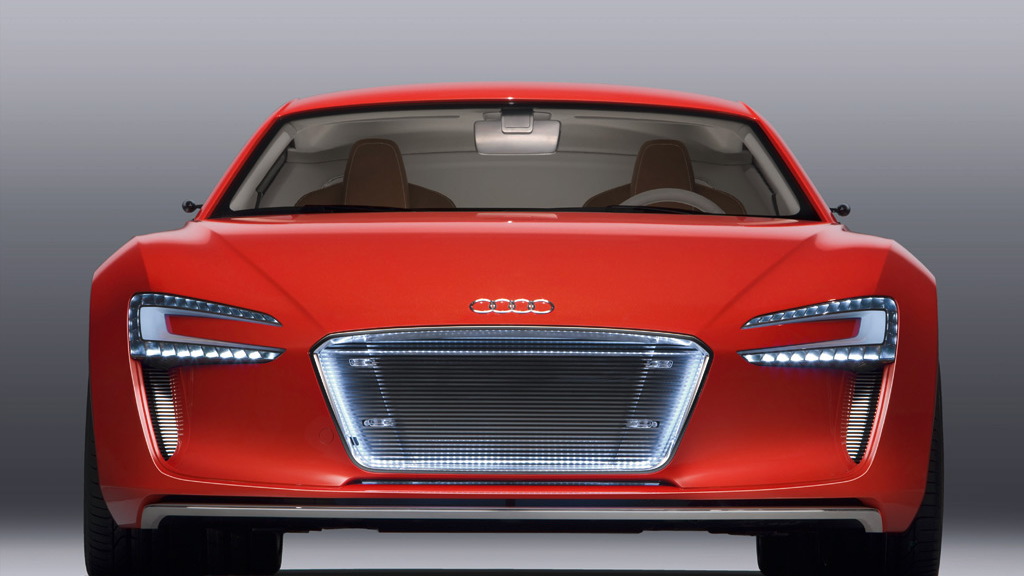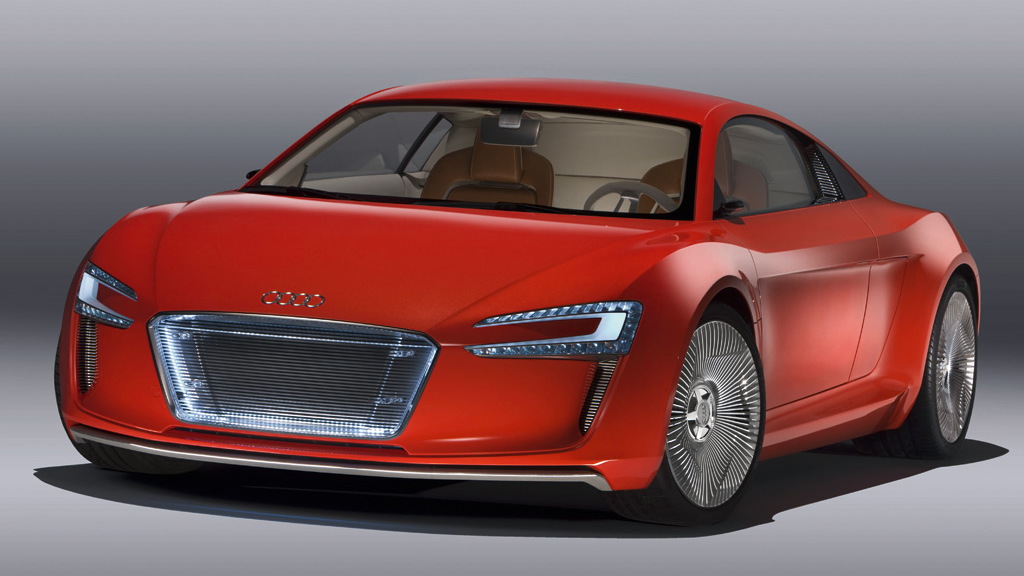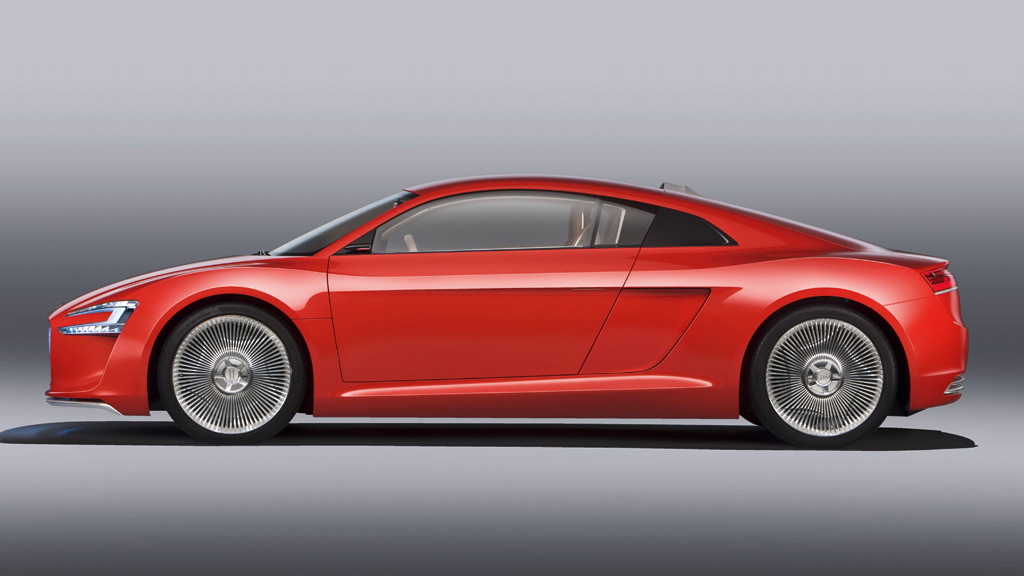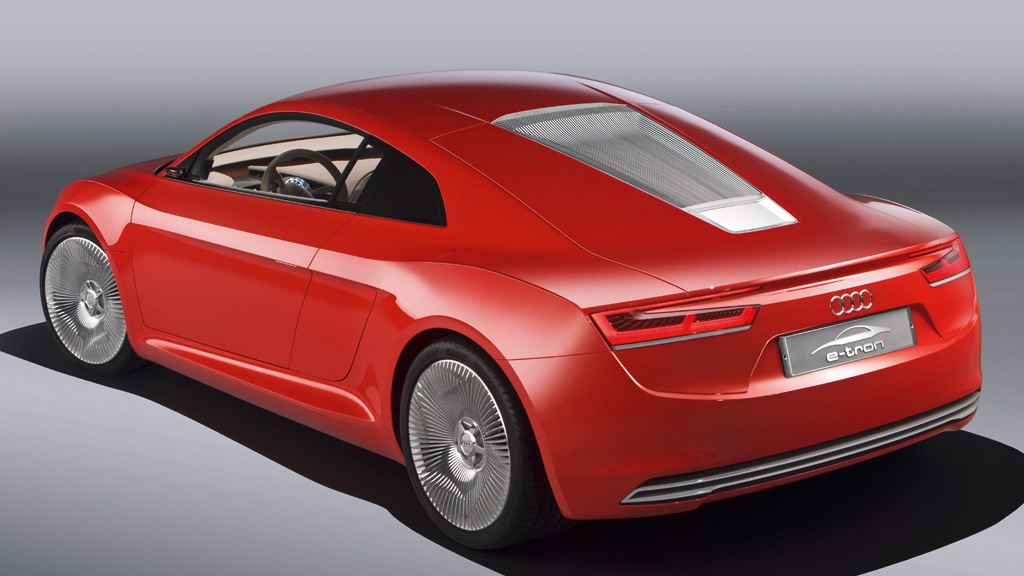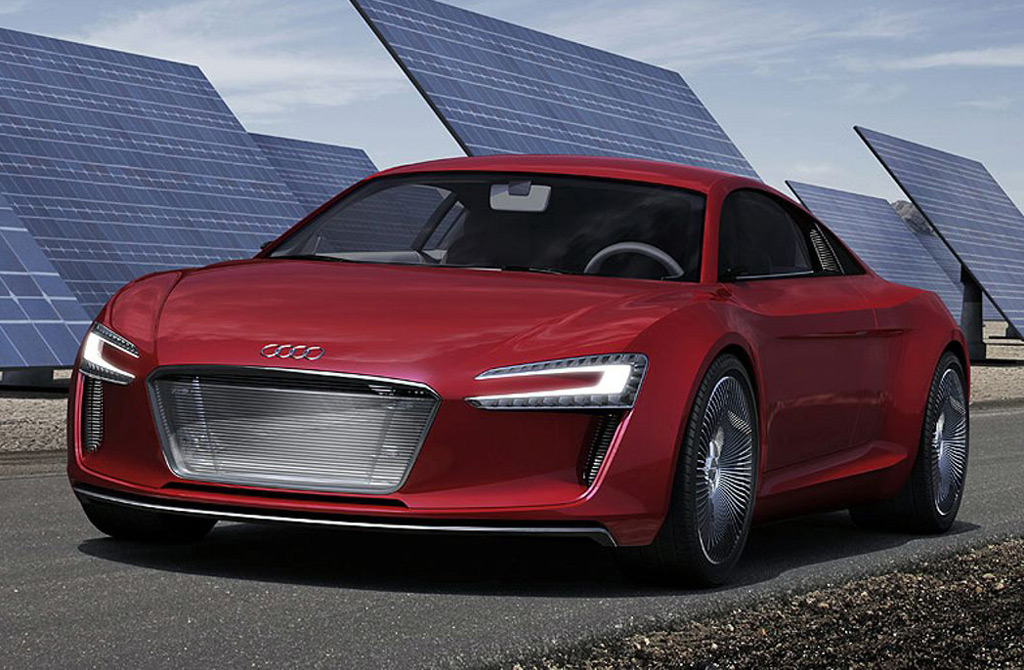
2009 Audi R8 e-Tron Concept
Yesterday we brought you the first images of the Audi e-Tron concept car from the Frankfurt Auto Show. Now, we have all the technical details of this stunning supercar propelled purely by electrons.
Until now, all we knew was that the e-Tron was based on the regular R8 sports car, with the side "blade" styling gone, a unique grille, a custom interior, LED headlights, and bright red paint.
Torque: 3,300 foot-pounds
There's no denying the e-Tron looks great, but is it truly a supercar at heart? The newly revealed mechanical specs show that Audi is serious about maintaining the brand's performance image.
For starters, it uses four electric motors, two on each set of wheels. Torque can be allocated among each of the wheels as required, making the e-Tron truly a quattro in the Audi tradition. The default torque split is 30 percent to the front wheels, and 70 percent to the rears.

2009 Audi R8 e-Tron Concept

2009 Audi R8 E-Tron Concept
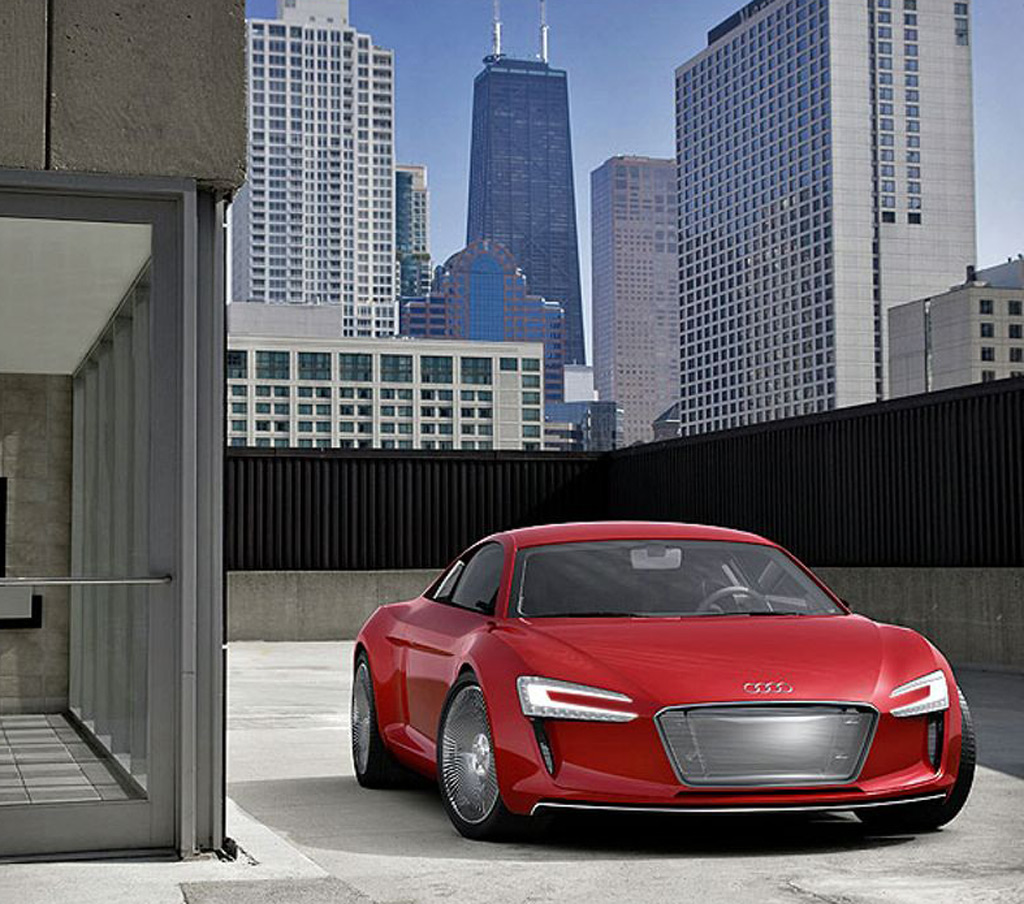
2009 Audi R8 e-Tron Concept

2009 Audi R8 e-Tron Concept
Total combined torque is an almost incomprehensible 3300 foot-pounds, though the combined power of the motors is "just" 230 kilowatts (313 horsepower).
It's the performance figures that put a car like this on the map, though. Audi's electric two-seater accelerates from 0 to 62 miles per hour in 4.8 seconds. That's roughly 1 second longer than the two-wheel-drive 2009 Tesla Roadster, but the e-Tron is a far more sophisticated and refined car.
Subtract engine, add battery pack
The water-cooled lithium-ion battery pack, mounted directly behind the passenger cabin ahead of the rear axle--where an engine used to sit--holds 42.4 kilowatt-hours of usable energy out of a 53-kWh total.
The pack, including the inverter and power electronics, weighs roughly 1,000 pounds. Overall weight distribution of the 3530-pound car is 42:58 front to rear.
Top speed is electronically limited to 124 miles per hour. As Audi notes, power consumption rises disproportionately to speed, so this keeps total range above a minimum of at least 150 miles.
Charging time on European standard 230-Volt power is six to eight hours for a fully discharged battery pack. High-voltage charging, when available, cuts that to 2.5 hours.
As with all electric-drive cars, the battery pack is also recharged via regenerative braking. In addition, the Audi e-Tron has a single hydraulic disc brake on the front axle and two electrically-actuated floating caliper brakes at the rear, all controlled via an electronic brake-by-wire system.
Aluminum and carbon fiber
Despite starting with an R8, Audi stresses that virtually every one of the e-Tron's mechanical components was designed from scratch and optimized for electric drive.
Weight of the core vehicle was minimized, aided by the R8's aluminum structure and carbon fiber-reinforced plastic body panels. Active air intakes in the grille and behind the doors open only as needed, minimizing aerodynamic drag otherwise.
Audi has gone to great lengths to minimize the power consumed by accessories. Every single light is an LED, and the climate control uses a heat pump rather than conventional air conditioning and electric heaters.
Many of the car's systems automatically adapt to ambient conditions. The e-Tron processes images from a front-mounted camera to detect and avoid oncoming traffic, stay within lane markings, and adjust the intensity, focus, and pattern of the lights.
Smartphone controls
Inside, Audi emphasized the new powertrain by minimizing dash clutter and keeping the central tunnel exceptionally thin. The flush "gear selector" (with forward, neutral, and reverse) emerges from the tunnel when the e-Tron is powered up.
Rather than a traditional instrument cluster, the e-Tron has a large foldout display flanked by two round dials, a power meter and a speedometer. Vehicle controls are operated via a touch-sensitive scroll pad right on the steering wheel, an element Audi says was inspired by smartphones. Even the climate control slider is a touchscreen--just like, say, an Apple iPhone.
Talking to traffic lights
Among the more advanced electronic features is what Audi calls "car-to-x communications", in which parts of the infrastructure "talk" to the oncoming car.
For instance, a traffic light could send its cycle timing to the car, so adaptive cruise control could speed up or slow down the car to make the light. Audi has a test model of this system running in Ingolstadt, as do many other carmakers and organizations in the US and Asia.
e-Tron vs Tesla?
So, is the Audi e-Tron a true competitor for the 2009 Tesla Roadster, which is closing in on 1,000 deliveries to paying customers?
Well, it would be if the car were to go into production. Audi calls it purely a concept car at the moment, and hasn't given any indication that the company is considering building it for sale.
So right now, the Tesla Roadster remains the only electric supercar in volume production. If the 2011 Dodge Circuit joins the pack, would Audi make it three?
Stay tuned to GreenCarReports.com for the latest updates from Ingolstadt.
